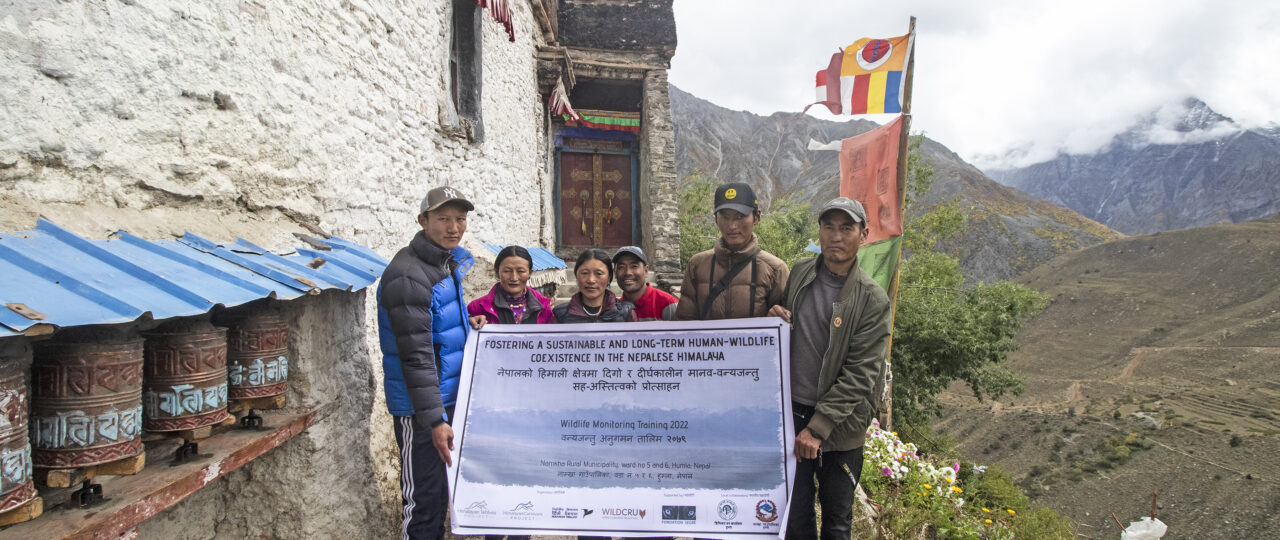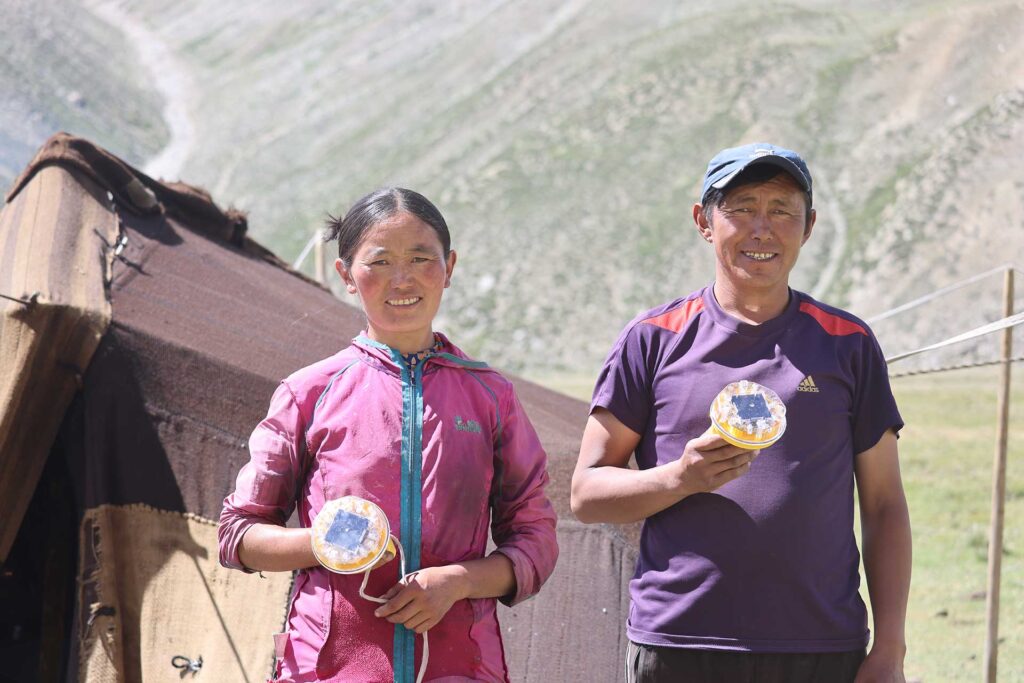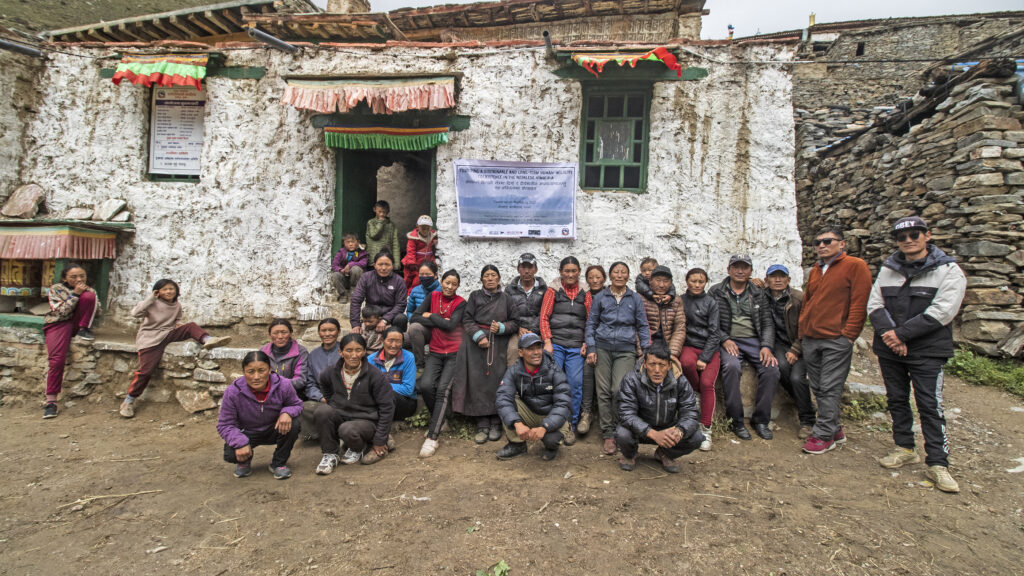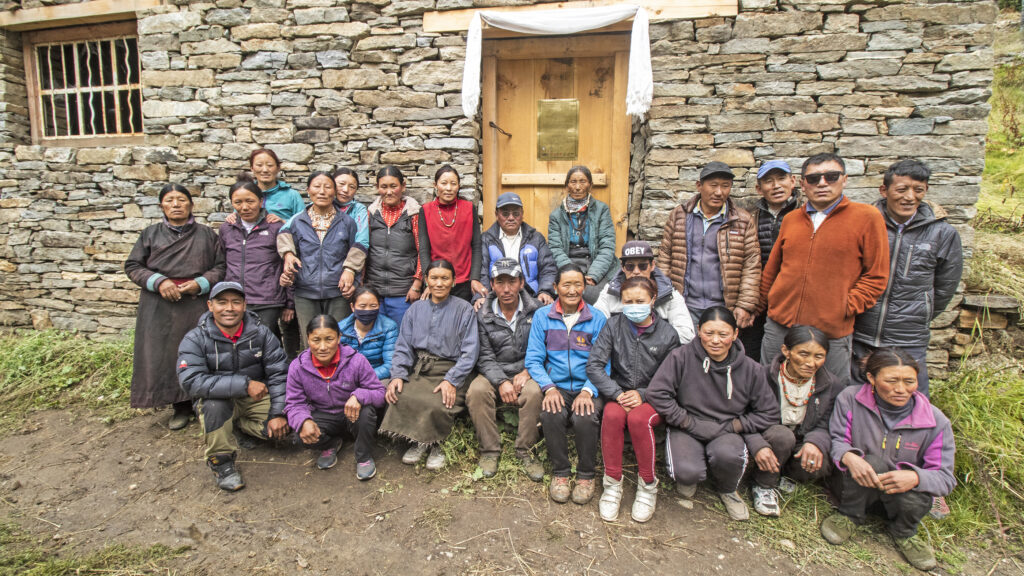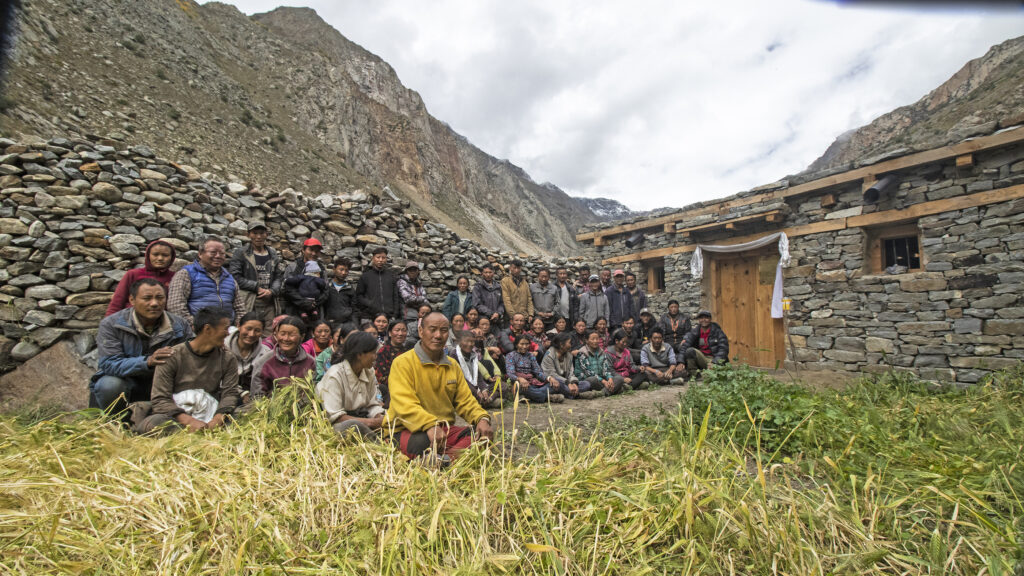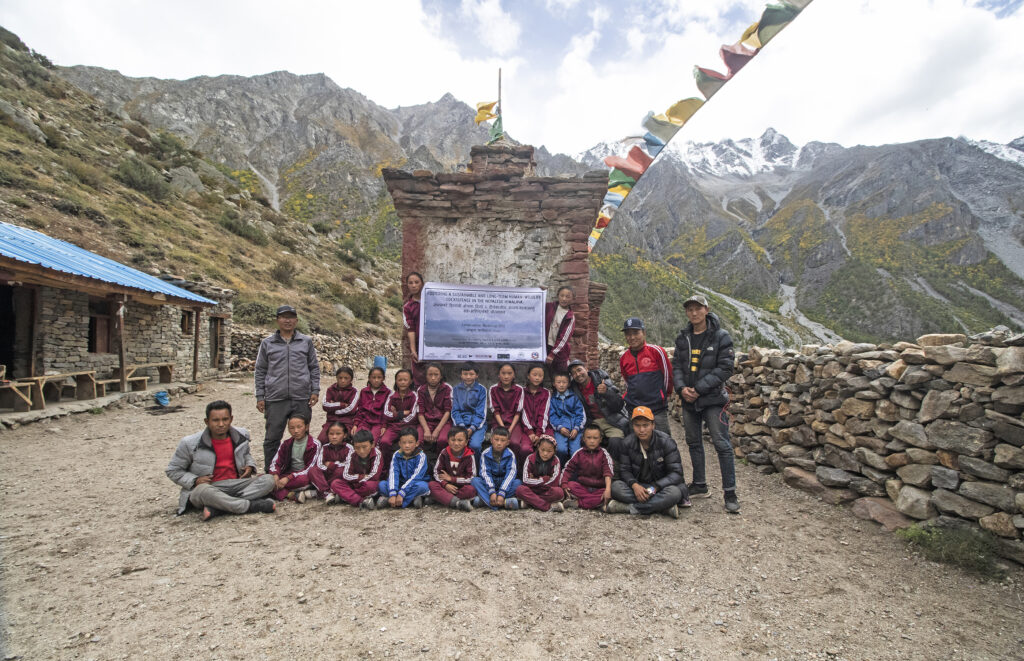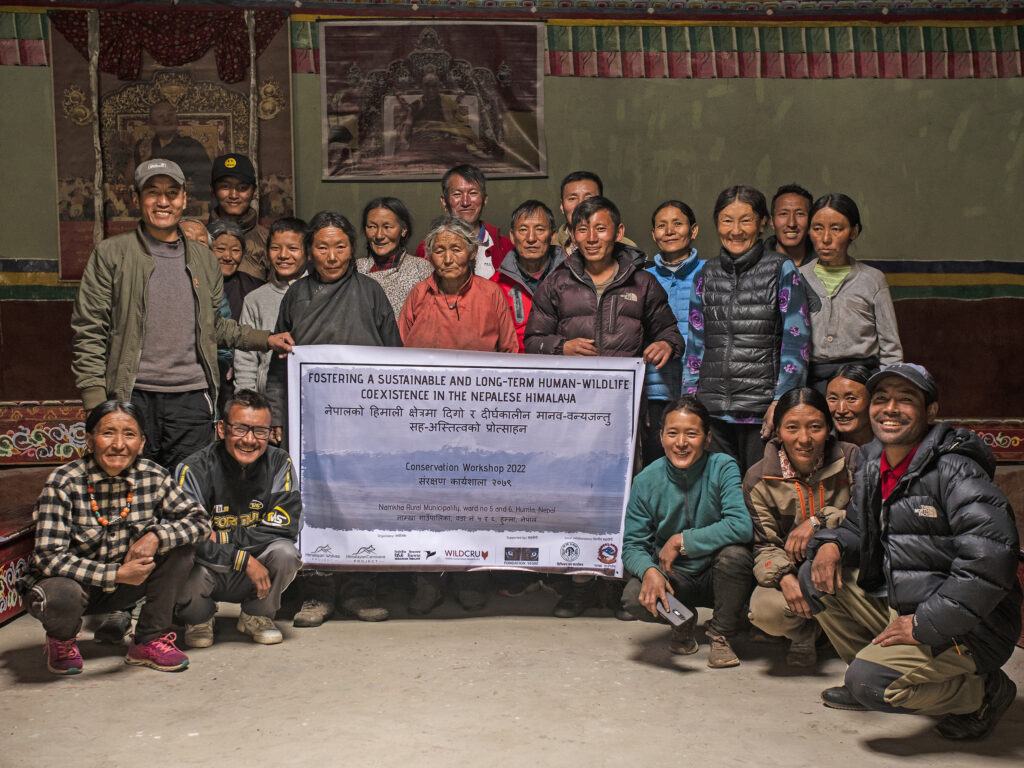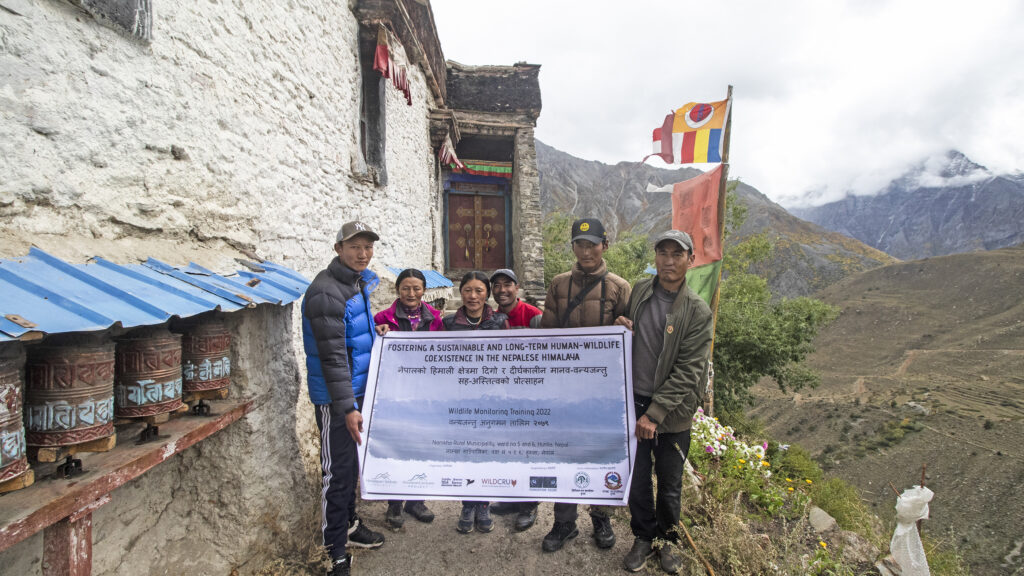Conservation Workshop and Wildlife Monitoring Training 2022
Two months after returning from our research expedition from Upper Humla, we geared up once again as the conservation workshop and wildlife monitoring training, planned for September, was drawing near. All the necessary preparations were completed by the first week of September and we set off for the community conservation work for the second year in a row.
This autumn we came to Humla earlier to make sure that an unexpected heavy snow fall does not lead us through troublesome times as has happened in the previous year. However, things did not go as planned either, they never do. Bad weather, triggered by a continuous downpour, delayed our advance towards Upper Humla by almost a week. We accepted the harsh reality of being in the mountains.
Once in Limi, we had an opportunity to venture higher up into the Transhimalayan valleys. During this hike, we visited one of the herders’ camps. To our utmost delight, we saw the herders making an active use of the fox lights we had provided to them during our recent research expedition in June-July 2022. Upon seeing us, one of the herders exclaimed, ‘These fox lights have worked magic to us this season. Earlier, our nights used to be hectic as we had to either light a bonfire or take turns in guarding our valuable livestock against a possible intrusion of a predator. But we have been relieved of that since we started using the fox lights. Every night the lights deter the predators and we have a sound sleep’.
The cheerful faces of Limiwas (the people of Limi) welcomed us into the villages. They were excited to inaugurate the communal predator-proof livestock corrals we had constructed in the villages earlier in the summer. For the inauguration, we posted a metallic information board (of the corral) by the entrance of the corral and covered it with a piece of cloth. Then an elderly member of the village, chosen by the villagers, came forward and slide the cloth to a side to uncover the board indicating a formal opening of the corral. Once the symbolic opening ceremony was over, the villagers applauded our conservation efforts and thanked us heartily for keeping up with our commitments. We were filled with joy for the gratitude bestowed upon us in all the villages. ‘With the communal corrals built in the villages, yak calves, vulnerable to attacks from snow leopards during the winter months, will rest in the safety of the predator-proof structures!’ Thinking of this brought smiles to our faces.
During the conservation workshops, we provided detailed information to the villagers on the proper use of the communal corrals and the fox lights, about the need of creating habitat refuges for wildlife, and the ways by which the depredation compensation payment process could be made realistic and practical. As the discussions progressed, villagers told us about a recent tragic incident. A wild yak had injured a young herder in the pasturelands a few days before we had arrived there and the victim had to be taken to Simkot and from there to Kathmandu for emergency medical treatment. This incident made us realize of this new and currently most pressing conservation concern of local people which we must address. Dedicated efforts to mitigate the herders’ conflict with the wild yaks that is threatening not only their livelihoods but also their health and lives is the need of the hour.
We were very happy to notice that the formations of Community Conservation Groups (CCGs) in the villages have sparked a positive attitude and awareness towards wildlife among the villagers. All the CCGs have performed very well so far as they have captured a wide range of wildlife in the camera traps since November 2021. Interestingly, a Himalayan black bear was caught in a camera trap above Halji village last year, leaving the villagers awestruck as no one has seen the species around their villages. As a consequence, the villagers are keen to know about the diverse wildlife community that lives around their villages. They were shining with pride when telling us that they pro-actively set the camera traps to new strategic locations in hope of obtaining more interesting wildlife records. The follow-up training for the CCGs this year has deepened their understanding of the importance of wildlife monitoring while also boosting their technical skill sets. Importantly, our long-time expedition cook, Pema, is now also working as a local field officer for our project due to his exceptional enthusiasm and drive to support wildlife conservation efforts. He has been of immense help with skilfully moderating the workshops and the trainings during this field trip.
One of the CCG members from the village of Til had joined us in the research expedition earlier this year as a local field guide to deepen his scientific field skills. Similarly, our local field guide from last year’s field expedition has also joined the CCG in Halji. This provides us with opportunities to teach various research techniques to these selected CCG members over an extended time period. They share their knowledge with the other CCG members. Likewise, it has also enabled us to upscale our research activities as the CCG members coordinate the villagers’ team to monitor our camera traps over the year when we are not in the field.
During the school workshops the children also showed an improved awareness towards the wildlife in their area. They were more comfortable than the previous year to participate in the workshop activities. They loved our new conservation games as much as the ones last year.
The place is far away and difficult to reach, but any hurdles, little or big, are nothing compared to the pleasure we get by being able to slowly but steadily work towards fostering a long-term human-wildlife coexistence in these remote mountain habitats.
During this most recent visit, we realized that our regular visits to the villages with information on various aspects of wildlife in the area have made them more curious about the animals while also motivating them to work for their protection for future generations. We take it as an inspiration to keep doing what we do.
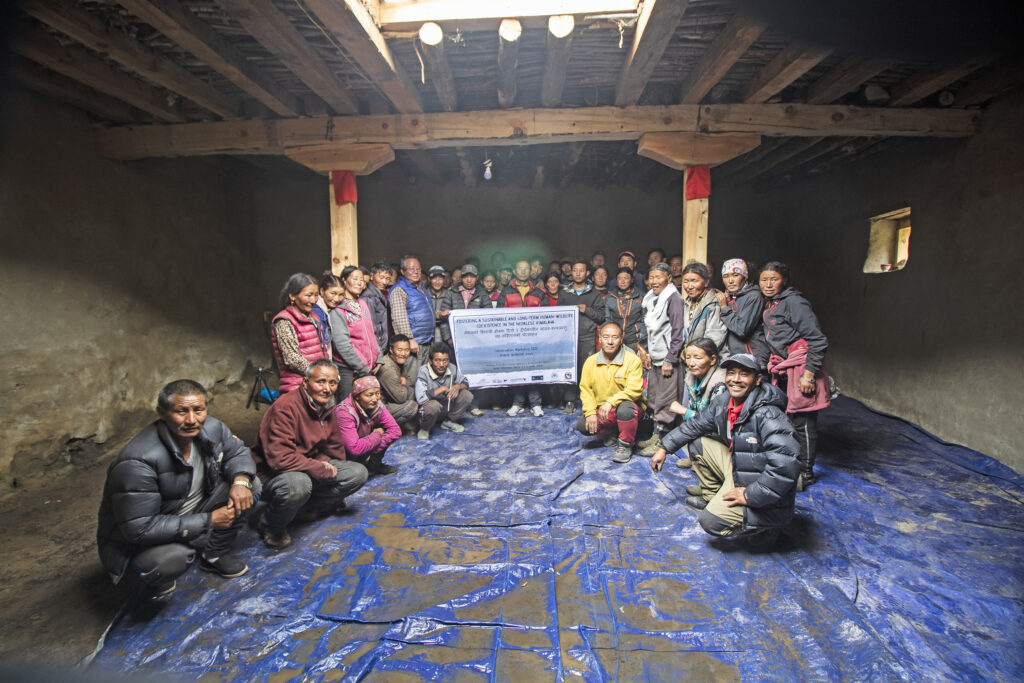
Participants of the conservation workshop (held inside the newly inaugurated communal livestock corral) in Halji village.
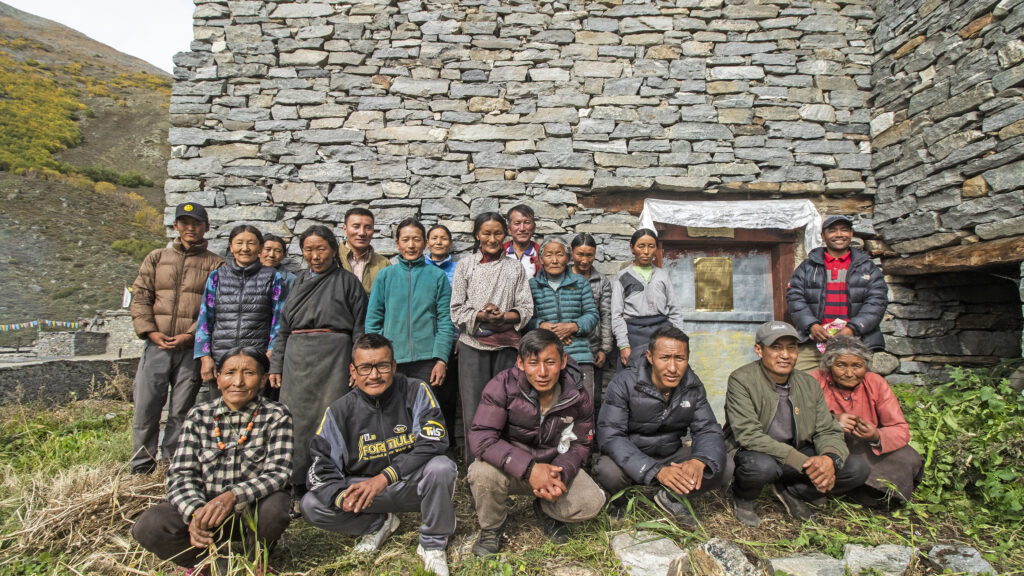
Villagers from Til outside the newly inaugurated communal predator-proof livestock corral (an abandoned corral was purchased for communal use in this village).
